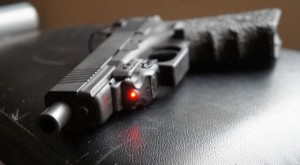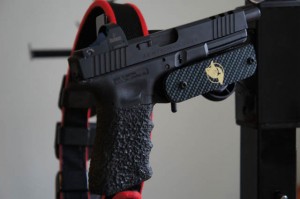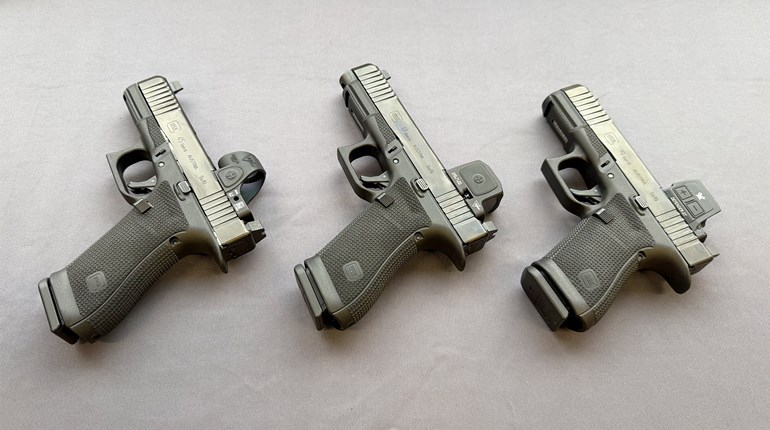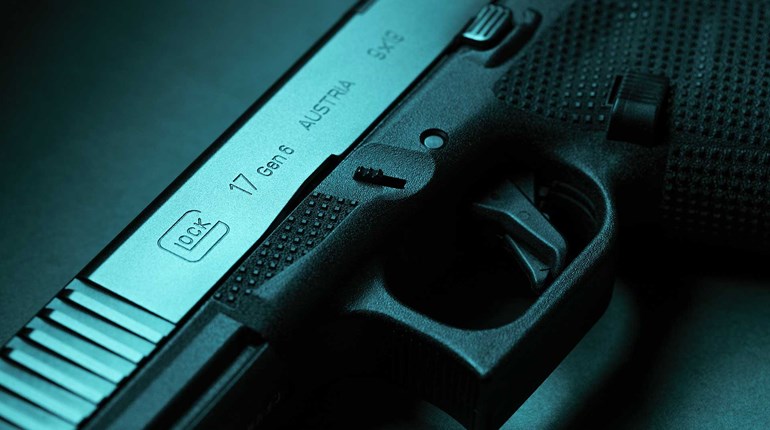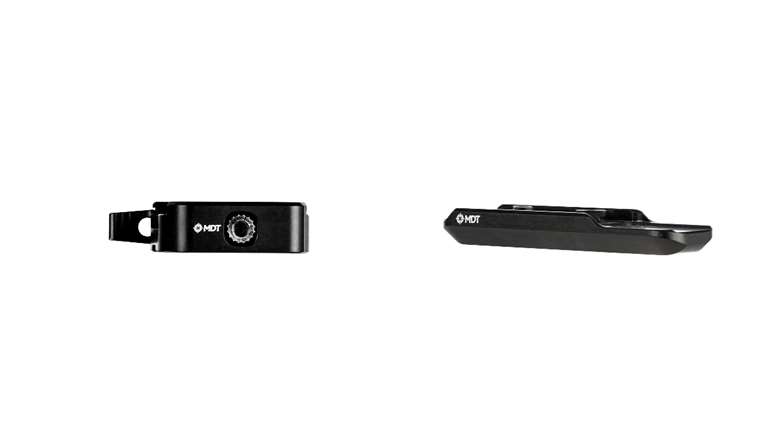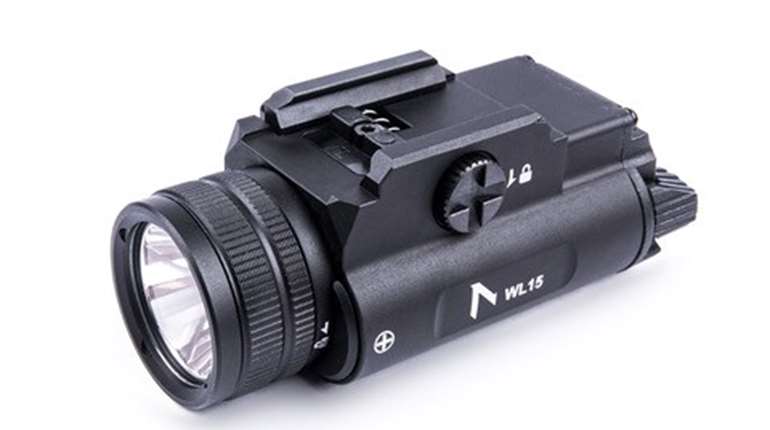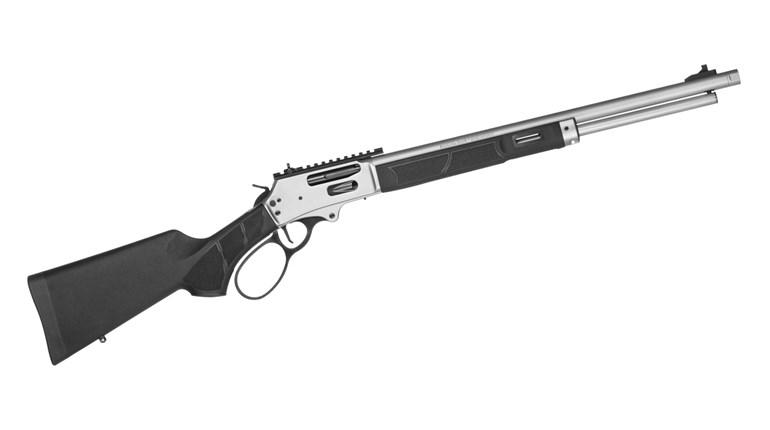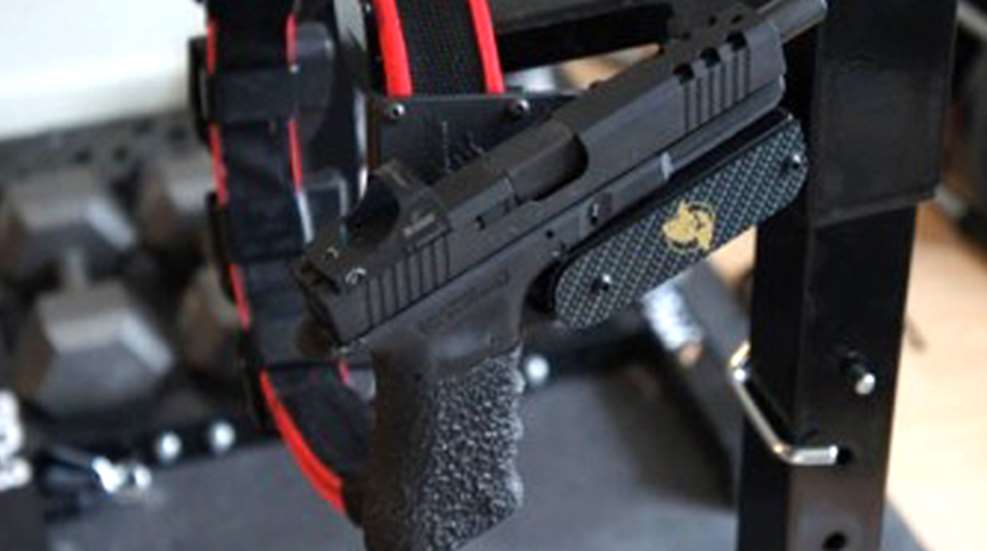
Glocks have changed very little since they were introduced to the market in the 80s. While certain features have been added and the design has been tuned, if you placed a Gen1 Glock next to a Gen4 Glock, they'd both be clearly recognizable as Glocks. In no small part because of that success, it's also now possible to take a factory Glock and turn it into a next-generation handgun with all the latest improvements in defensive technology.
This project started with an ordinary Gen3 Glock 34 that was originally purchased for competition shooting. After some small parts were replaced, the G34 flew off to Southpaw Custom in Arkansas to have the grip textured and a unique modification called the Sevigny Speedway installed. From the factory, Glock's grip is too slick for many shooters' tastes, and it is frequently upgraded with grip tape or stippling. The Southpaw Custom stippling job has a very aggressive texture, making the gun sit firmly in the hand regardless of sweat or wet weather. An extended beavertail is also added to prevent slide bite. The Sevigny Speedway removes the ledge in the back of the Glock's magazine well and opens it up by about 20 percent, allowing for even faster reloads.
With the frame complete, it was time to add an optic. Many respected pistol instructors, including Bill Rogers, view red-dot sights mounted on pistols as the future of defensive handgunning. There are several custom shops that will mill a Glock's slide to mount a Trijicon RMR, Burris FastFire, Leupold Deltapoint or other micro-dot sight. The project gun was fitted with a Burris FastFire II, mostly because there was one sitting around my office.
Brownells sells slides that are pre-cut to fit an optic—this way, you don't have to make the commitment to cutting your slide in case you ever want to go back to an optic-free gun. Available for the common window style red-dot sights, the Brownells slide is a hassle-free way of adding a red-dot sight to your pistol. It's also available with cuts to have both the red-dot and iron sights on the gun. Iron sights are recommended as a backup to the dot sight in the event it fails. For this gun, however, the choice was to skip irons and opt for an even cooler backup sight.
If the red dot fails on this gun, the backup sight system is Crimson Trace's new Rail Master laser. The Rail Master represents the company's first "one-size-fits-all" laser, and can be mounted on any firearm with an integral rail. The unit currently living on the project Glock has also been mounted on a Glock 21, Springfield XD(M) and an M4 carbine. It fits all of those guns and is a great solution for mounting a laser on your defensive pistol or home-defense gun. The only two drawbacks are that you'll need a special holster made to fit the gun when it has the laser mounted, and unlike Crimson Trace's traditional products, the Rail Master does not have the "instinctive activation" to which many shooters are accustomed. Instead, the paddle on either side of the laser is pressed to activate and deactivate the laser.
The test platform kept the original Glock 34 barrel for maximum velocity for 9 mm rounds…and because it just looks cool. The eventual plan is to have the Glock barrel threaded for a suppressor, which will complete the package and effectively make this the coolest gun at any range. But all that doesn't matter if it doesn't shoot well. Thankfully, it shoots just fine. Initially, after mounting the optic, my zero jumped around quite a bit, but eventually settled down after about 500 rounds so the gun shoots point-of-aim/point-of-impact (POA/POI) at 25 yards with Winchester 147-grain FMJ. The laser was sighted in for POA/POI at 25 yards as well—if using the laser and dot simultaneously at distances inside of 25 yards, they will appear in separate locations on the target. Additionally, unlike pistols with iron sights, the height-over-bore of the sight will come into play if shooting at ranges less than 5 yards.
Getting hits with the pistol is so easy, it's like cheating. Once the Super Glock was sighted in, repeatedly drilling an 8-inch plate at 25 yards was as easy as "put the dot on the plate and press the trigger." Now, as far as mechanical accuracy goes, the Glock was shot for groups at 15 yards using a variety of ammo. The best group produced was with Federal 147-grain HST JHP, with four shots landing in .96 inch, and the fifth shot opening the group up to 1.22 inches. Winchester 147-grain FMJ printed a group just larger than 2 inches at 15 yards…from a standing position. It's difficult to state in words just how easy it is to be accurate with a red-dot sight mounted on your pistol.
However, there are some drawbacks to the platform. Unlike a $3,000 USPSA Open Division gun, the optic moves with every shot. This means that during recoil, even a competent shooter will lose the dot, unlike a front sight, which can (and should) be tracked through its entire arc of movement during recoil. This particular drawback will affect split times (the time between shots) initially, but can be eliminated with practice and repetition. Good recoil control and a strong body index on the target will cause the dot to return near the area of its original resting place almost every time.
Shootability and ease of use aren't the biggest advantages to mounting a red dot on a pistol. No, that comes in the form of what your eyes now get to do when using a dot or laser—stay focused entirely on the target. Instead of coming off the target to focus on the front sight, your focal plane in a defensive situation can stay exactly where you want it to stay, which is focused entirely on the person or thing trying to do you harm. They're also easy to see for people who have aging vision or other eye conditions. One of the testers of the pistol has an astigmatism in his left eye that prevents him from focusing on the front sight with both eyes open, but when using a pistol with a red-dot sight, he can easily keep both eyes open and focused on the target while achieving rapid hits.
Twenty years ago, the gun you're looking at wouldn't have been possible. Tremendous advances in optics and lasers now allow us to make the generation of defensive firearms even more user friendly. As more and more shooters adopt red-dot sights for their pistols, the technology will continue to be refined and enhanced. It wouldn't come as a shock if, in five years time, major police departments start equipping their officers with this technology.
For more information, contact:
Crimson Trace: http://www.crimsontrace.com/
Brownells: http://www.brownells.com/
Southpaw Custom: http://www.southpawcustom.com/
